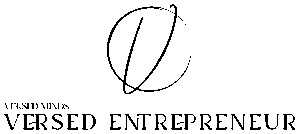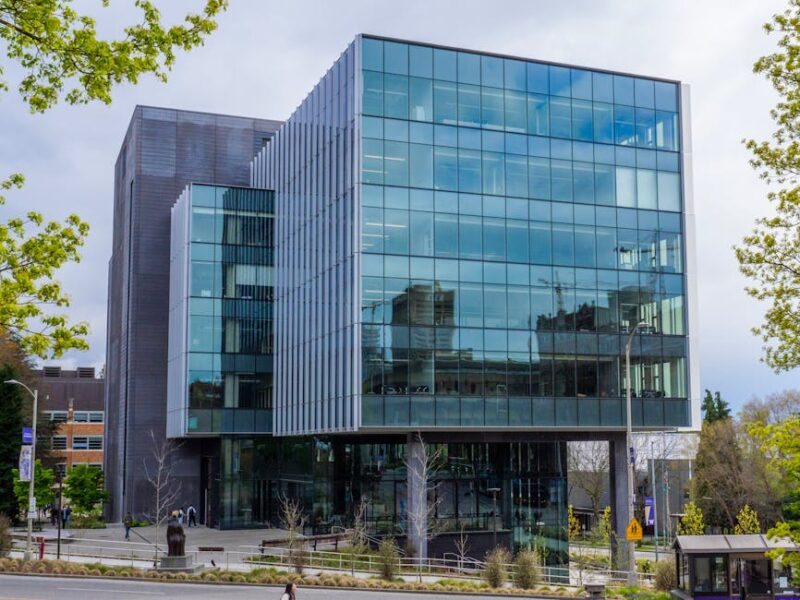Talent acquisition and management are essential components in building a successful workforce within any organization. Talent acquisition involves strategically attracting and hiring the right individuals to meet immediate business needs, while talent management focuses on nurturing and retaining these employees to support long-term organizational goals. Here’s a concise overview:
- Talent Acquisition: A strategic, reactive process designed to fill current vacancies by sourcing and hiring new talent.
- Talent Management: A proactive strategy aimed at developing and retaining existing employees to align with the organization’s future objectives.
Together, these functions create a comprehensive strategy that not only addresses immediate staffing requirements but also fosters long-term growth and sustainability.
In the modern business landscape, organizations must effectively integrate talent acquisition and management to succeed. This integrated approach ensures that a company’s workforce is aligned with its strategic goals, equipping it with the necessary skills and talents to drive future success.
I’m Gabrielle Reese, and with my background in business administration and a keen interest in talent strategies, I recognize the importance of a robust talent acquisition and management strategy. My business acumen and global experience offer a unique perspective on developing effective workforce strategies.
Talent acquisition and management glossary:
- how to become a talent acquisition specialist
- talent acquisition in human resource management
- talent acquisition specialist salary
Table of Contents
ToggleWhat is Talent Acquisition?
Talent acquisition is more than just hiring. It’s the strategic process of identifying, attracting, and bringing in new employees who align with a company’s long-term goals. Unlike recruitment, which focuses on filling immediate vacancies, talent acquisition looks ahead, aiming to build a talent pipeline that meets future needs.
Key Objectives of Talent Acquisition
-
Sourcing: This involves finding potential candidates from various channels. Modern methods include using platforms like LinkedIn to reach passive candidates and employing AI-driven tools for efficient screening.
-
Recruiting: Once potential candidates are identified, the focus shifts to engaging them. This involves understanding their aspirations and aligning them with the company’s needs. It’s about creating a compelling narrative that attracts top talent.
-
Onboarding: After hiring, the next step is onboarding. This ensures new hires are smoothly integrated into the company. Onboarding involves role introductions, cultural integration, and establishing a feedback loop to address any concerns early.
Importance of Talent Acquisition
Skilled Employees: A robust talent acquisition strategy ensures that the organization has the right skills in place. Skilled employees are crucial for maintaining productivity and driving innovation.
Proactive Hiring: By focusing on long-term needs, organizations can avoid the pitfalls of reactive hiring. Proactive hiring strategies help in anticipating and filling roles before they become critical, reducing downtime and improving efficiency.
Diverse Backgrounds: Diversity is a key objective in modern talent acquisition. A diverse workforce brings varied perspectives, fostering creativity and improving problem-solving. It also improves the company’s reputation as an inclusive and equitable employer.
In conclusion, talent acquisition is a strategic function that plays a critical role in shaping an organization’s future. By focusing on sourcing, recruiting, and onboarding, companies can build a workforce that not only meets current demands but is also prepared for future challenges. This sets the stage for effective talent management, where the focus shifts to developing and retaining these valuable employees.
What is Talent Management?
Talent management is a strategic approach focused on developing and retaining employees within an organization. It involves nurturing employee growth and aligning their skills with the company’s objectives.
Core Functions of Talent Management
-
Performance Management: This function involves regularly assessing employees’ work and providing constructive feedback. It includes setting clear expectations and supporting employees in meeting them, ensuring everyone contributes effectively to the organization’s success.
-
Learning and Development: Continuous learning is essential. Providing workshops, online courses, and certifications helps employees acquire new skills, enhancing their performance and preparing them for future roles within the company.
-
Succession Planning: Preparing for future leadership needs is crucial. Identifying potential leaders and offering them mentorship and cross-functional experiences ensures a smooth transition when key positions need to be filled.
-
Employee Engagement: Keeping employees motivated and satisfied is vital. Engaged employees are more productive and less likely to leave. This involves creating a positive work environment and offering opportunities for personal and professional growth.
Importance of Talent Management
Employee Retention: By investing in talent management, companies can significantly reduce turnover rates. Employees who feel valued and see a clear career path are more likely to stay.
Career-Pathing: Providing employees with a clear career path boosts morale. It shows that the company is committed to their growth and success.
Morale Boosting: A positive work environment and opportunities for advancement lead to higher morale. When employees are happy, they’re more productive and contribute positively to the company culture.
In summary, talent management is about more than just retaining employees. It’s about fostering a culture of growth and development. This not only benefits the employees but also strengthens the organization as a whole, ensuring it can meet future challenges with a skilled and motivated workforce.
Talent Acquisition vs. Talent Management
Focus and Scope
Talent Acquisition is akin to opening the doors to your company. It focuses on identifying gaps and sourcing the right candidates to fill them. This involves finding individuals who not only have the necessary skills but also align with the company’s culture and values. Think of it as building the foundation of a house; you need the right materials to ensure stability.
In contrast, Talent Management takes over once the talent is onboarded. The focus shifts to ensuring these employees grow and thrive within the company. It’s about understanding their strengths, offering them opportunities to develop, and keeping them engaged. Imagine it as furnishing and maintaining the house, making sure it remains a comfortable and functional space.
Time Horizon
Talent Acquisition is often a short-term, reactive process. When there’s an immediate need—like a vacant position or a new project—recruiters step in to fill the gap quickly. The goal is to hire the right person within a set timeframe.
On the other hand, Talent Management is a long-term, proactive process. It looks ahead, planning for future needs and ensuring employees are prepared to meet upcoming challenges. This involves succession planning and continuous development, focusing on the entire employee lifecycle.
Processes and Strategies
The processes in Talent Acquisition include:
- Sourcing: Finding potential candidates through various channels like LinkedIn and job portals.
- Recruiting: Engaging with candidates, understanding their aspirations, and matching them with the company’s needs.
- Onboarding: Integrating new hires into the organization, ensuring they understand their roles and feel part of the company culture.
Talent Management, however, involves:
- Training: Providing employees with tools and resources to improve their skills.
- Performance Appraisals: Regularly assessing employees’ performance and providing feedback.
- Employee Growth: Offering opportunities for learning and development to prepare employees for future roles.
In summary, while talent acquisition focuses on bringing the right people into the organization, talent management ensures they develop and remain engaged. Both are essential for building and maintaining a strong workforce.
Building a Talent Acquisition Strategy
Developing an effective talent acquisition strategy is crucial for attracting the right candidates and ensuring their seamless integration into your organization. This involves a blend of innovative recruitment methods, advanced technologies, and effective practices.
Sourcing and Recruitment Techniques
Platforms like LinkedIn have become essential tools for discovering talent. LinkedIn’s advanced search features enable recruiters to identify candidates based on specific skills, industries, or roles. This facilitates reaching out to passive candidates—those not actively seeking jobs but open to new opportunities. Engaging with these candidates requires a unique approach, often emphasizing what the new role can offer in terms of career growth and benefits.
AI-driven tools have also revolutionized recruitment. These tools can automate tasks such as resume screening and matching job requirements with candidate profiles, significantly accelerating the recruitment process. They can even conduct initial interviews using chatbots, ensuring that only the best-fit candidates proceed to the next stages.
Interview and Selection Processes
Once potential candidates are identified, the next step is the interview and selection process. A structured interview process is crucial here. By asking all candidates the same set of questions, recruiters can ensure consistency and fairness in evaluation. This makes it easier to compare responses and make informed decisions.
Additionally, psychometric tests can be used to assess a candidate’s suitability for a role. These tests provide insights into behavioral traits and cognitive abilities, revealing aspects not evident from interviews or resumes. Cultural fit assessments are equally important. Beyond skills and experience, it’s crucial to determine if a candidate aligns with the company’s values and culture. This can be done through situational judgment tests or by involving potential team members in the interview process.
Onboarding Process
The onboarding process sets the tone for a new hire’s journey within the organization. It starts with a thorough role introduction, which goes beyond just explaining the job description. New hires should be made aware of their responsibilities, introduced to their team, and shown how their role contributes to the organization’s goals.
Cultural integration is another key aspect. Organizing sessions where new hires learn about the company’s history, values, and traditions can be beneficial. Team-building activities or mentorship programs can also help them integrate faster and feel more connected.
Finally, establishing a feedback loop is crucial. New hires should have the opportunity to share their onboarding experience, challenges faced, and suggestions. This continuous feedback can help refine the onboarding process over time, ensuring it remains effective and welcoming.
Implementing a Talent Management Strategy
In the realm of talent management, the emphasis is on nurturing and developing existing talent rather than solely focusing on acquisition. A comprehensive strategy involves several key components aimed at fostering growth, ensuring leadership continuity, and maintaining a high-performing workforce.
Employee Development and Training
Employee development is crucial for retaining talent and enhancing morale. Offering diverse training options can cater to various learning styles and career aspirations.
-
Workshops: Regular workshops help employees stay updated with industry trends and acquire new skills. These sessions can be interactive and focus on both technical and soft skills like leadership and communication.
-
Online Courses: Platforms like Coursera and Udemy offer courses that employees can take at their own pace, fitting learning into their busy schedules. These courses can be tailored to individual career paths and development needs.
-
Certifications: Encouraging employees to pursue certifications in their field not only enhances their skills but also adds credibility to the organization. It demonstrates a commitment to professional growth and can lead to higher job satisfaction.
Succession Planning
Succession planning ensures that the organization is prepared for future leadership needs. It’s about identifying and grooming potential leaders within the company.
-
Identify Leaders: Use performance data and feedback to spot employees with leadership potential. Regular evaluations can highlight those who consistently go above and beyond in their roles.
-
Mentorship Programs: Pair potential leaders with experienced mentors. This provides them with valuable insights, guidance, and experience in leadership roles.
-
Cross-Functional Experiences: Allowing potential leaders to work in different departments or roles can broaden their perspective and prepare them for higher responsibilities. This exposure helps them understand various aspects of the business and how different functions interconnect.
Performance Appraisal and Feedback
Regular feedback is essential for employee development and alignment with organizational goals.
-
Constructive Feedback: Feedback should be specific, actionable, and positive. It guides employees on what they are doing right and where they need improvement, fostering a culture of continuous growth.
-
Clear Objectives: Set clear and measurable objectives for each employee. This gives them a sense of direction and helps them understand what is expected of them.
-
Regular Reviews: Move beyond annual reviews to a continuous feedback approach. Regular check-ins, quarterly reviews, or project-end evaluations provide timely feedback. This allows employees to adjust and stay aligned with the company’s objectives.
Implementing these strategies can transform how an organization manages its talent, ensuring that employees are engaged, developed, and ready to meet future challenges.
Frequently Asked Questions about Talent Acquisition and Management
What is the difference between HR and talent acquisition?
Human Resources (HR) is a broad field that covers the entire employee lifecycle, from hiring to retirement. It involves everything from payroll, benefits, and compliance to employee relations and development. Think of HR as the umbrella under which all employee-related activities fall.
Talent Acquisition, on the other hand, is a specialized function within HR focused solely on the hiring phase. It involves identifying staffing needs, sourcing, and recruiting candidates who fit the company culture and have the necessary skills. Talent acquisition professionals work on building relationships with potential candidates and creating a strong employment brand to attract top talent.
What are the 5 core functions of talent management?
Talent Management is about nurturing and retaining talent within the organization. Here are the five core functions:
-
Recruitment: This is the initial step where potential employees are identified and brought into the organization. It involves sourcing candidates, conducting interviews, and selecting the best fit for the company.
-
Performance Management: Involves setting clear expectations, providing feedback, and evaluating employee performance. Regular appraisals help in aligning employee goals with organizational objectives.
-
Learning and Development: Focuses on employee growth through training programs, workshops, and continuous learning opportunities. It’s about equipping employees with the skills needed for their current role and future responsibilities.
-
Succession Planning: Ensures that there are capable leaders ready to step into key roles as they become available. This involves identifying high-potential employees and preparing them for future leadership positions.
-
Engagement: Keeping employees motivated and connected to the organization’s mission. Engaged employees are more productive and less likely to leave the company.
What does a Talent Acquisition Manager do?
A Talent Acquisition Manager plays a crucial role in shaping the workforce of an organization. Here’s what they typically do:
-
Staffing Needs: They assess the organization’s current and future staffing needs. This involves understanding business goals and determining the types of skills required to achieve them.
-
Recruitment Strategies: They develop and implement recruitment strategies to attract top talent. This can include using social media, job boards, and employee referrals to find suitable candidates.
-
Employment Branding: They work on building the company’s brand as an employer of choice. This involves creating a positive image of the organization to attract potential employees. A strong employment brand can significantly impact the quality and quantity of applicants.
Talent acquisition managers must adapt to changing organizational needs and ensure that the company attracts and retains the right talent.
Conclusion
At Versed Entrepreneur, we understand the importance of an integrated approach to talent acquisition and management. This approach is not just about filling vacancies or managing existing employees; it’s about creating a seamless, strategic process that aligns with the organization’s goals. By combining the strengths of both talent acquisition and talent management, companies can build a workforce that is not only skilled but also engaged and ready to meet future challenges.
An integrated strategy requires company-wide participation. Every department and team member plays a role in attracting and retaining talent. For instance, involving potential team members in the interview process can help assess cultural fit, as highlighted in our research. This collaboration ensures that new hires are not just a good fit for their roles but also for the organization’s culture and values.
Our resources at Versed Entrepreneur focus on enhancing workplace culture and productivity through personalized leadership approaches. We provide insights and tools to help businesses adopt a holistic view of talent management. By fostering a culture of continuous learning and development, organizations can ensure long-term success and sustainability.
To explore more about how to develop a comprehensive strategy for talent acquisition and management, visit our Career Development section.
Disclaimer: This article is for informational purposes only and does not constitute legal or financial advice. Please consult a professional advisor for personalized guidance.










